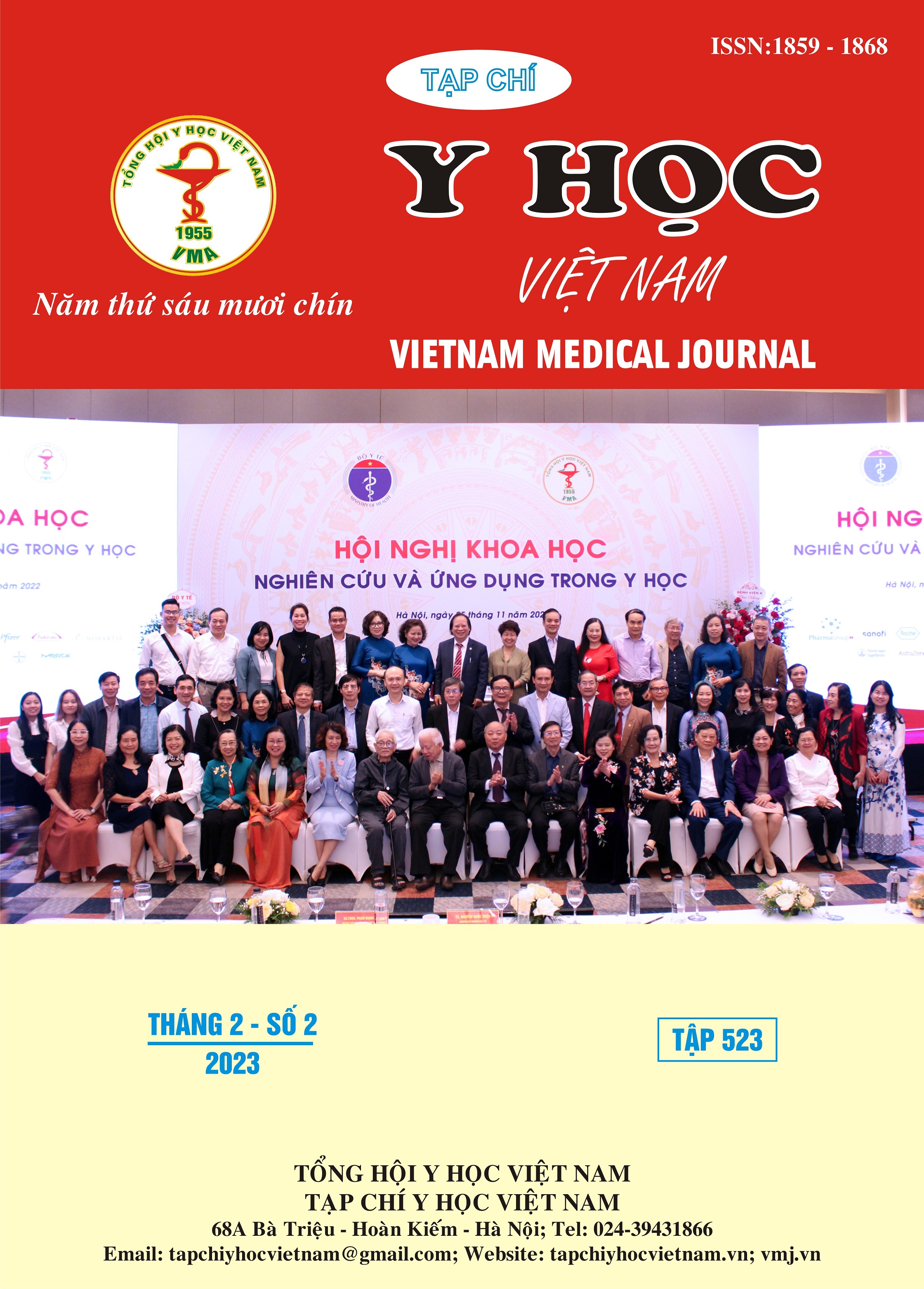PERCUTANEOUS NEPHROLITHOTOMY IN PEDIATRIC AGE GROUP A CASE REPORT OF KIDNEY STONE IN PEDIATRIC AGE GROUP
Main Article Content
Abstract
Kidney stone in pediatric age group is an uncommon disease, but need to be managed thoroughly. Technological innovations have contributed to the development of minimally invasive treatment of kidney stone in pediatric patients such as percutaneous nephrolithotomy (PCNL). We report a case of kidney stone in a 10-year-old patient, who was treated by using PCNL procedure at Hanoi Medical University Hospital. Thereby, we acknowledge the safety and effectiviness of PCNL in management of kidney stone in pediatric patients.
Article Details
Keywords
Pediatric kidney stone, Percutaneous nephrolithotomy, PCNL
References
1. Hill AJ, Basourakos SP, Lewicki P, et al. Incidence of Kidney Stones in the United States: The Continuous National Health and Nutrition Examination Survey. 2022;207(4):851-856.
2. Sas DJ, Hulsey TC, Shatat IF, Orak JKJTJop. Increasing incidence of kidney stones in children evaluated in the emergency department. 2010;157(1):132-137.
3. Smith J, Stapleton FB. Kidney stones in children: Epidemiology and risk factors.
4. Tasian GE, Copelovitch LJTJou. Evaluation and medical management of kidney stones in children. 2014;192(5):1329-1336.
5. Tekgul S, Dogan H, Erdem EJEUG. Urinary stone disease, guidelines on pediatric urology. 2015:56-58.
6. Mishra SK, Ganpule A, Manohar T, Desai MRJIJoUIJotUSoI. Surgical management of pediatric urolithiasis. 2007;23(4):428.
7. Gan JJW, Gan JJL, Gan JJH, Lee KTJIjouIjotUSoI. Lateral percutaneous nephrolithotomy: A safe and effective surgical approach. 2018;34(1):45.
8. Zeng G, Zhao Z, Wan S, Zhong W, Wu WJPO. Comparison of children versus adults undergoing mini-percutaneous nephrolithotomy: large-scale analysis of a single institution. 2013;8(6):e66850.
9. Özden E, Mercimek MN, Yakupoǧlu YK, Özkaya O, Sarikaya ŞJTJou. Modified Clavien classification in percutaneous nephrolithotomy: assessment of complications in children. 2011;185(1):264-268.
10. Resorlu B, Unsal A, Tepeler A, et al. Comparison of retrograde intrarenal surgery and mini-percutaneous nephrolithotomy in children with moderate-size kidney stones: results of multi-institutional analysis. 2012;80(3):519-523.
2. Sas DJ, Hulsey TC, Shatat IF, Orak JKJTJop. Increasing incidence of kidney stones in children evaluated in the emergency department. 2010;157(1):132-137.
3. Smith J, Stapleton FB. Kidney stones in children: Epidemiology and risk factors.
4. Tasian GE, Copelovitch LJTJou. Evaluation and medical management of kidney stones in children. 2014;192(5):1329-1336.
5. Tekgul S, Dogan H, Erdem EJEUG. Urinary stone disease, guidelines on pediatric urology. 2015:56-58.
6. Mishra SK, Ganpule A, Manohar T, Desai MRJIJoUIJotUSoI. Surgical management of pediatric urolithiasis. 2007;23(4):428.
7. Gan JJW, Gan JJL, Gan JJH, Lee KTJIjouIjotUSoI. Lateral percutaneous nephrolithotomy: A safe and effective surgical approach. 2018;34(1):45.
8. Zeng G, Zhao Z, Wan S, Zhong W, Wu WJPO. Comparison of children versus adults undergoing mini-percutaneous nephrolithotomy: large-scale analysis of a single institution. 2013;8(6):e66850.
9. Özden E, Mercimek MN, Yakupoǧlu YK, Özkaya O, Sarikaya ŞJTJou. Modified Clavien classification in percutaneous nephrolithotomy: assessment of complications in children. 2011;185(1):264-268.
10. Resorlu B, Unsal A, Tepeler A, et al. Comparison of retrograde intrarenal surgery and mini-percutaneous nephrolithotomy in children with moderate-size kidney stones: results of multi-institutional analysis. 2012;80(3):519-523.


